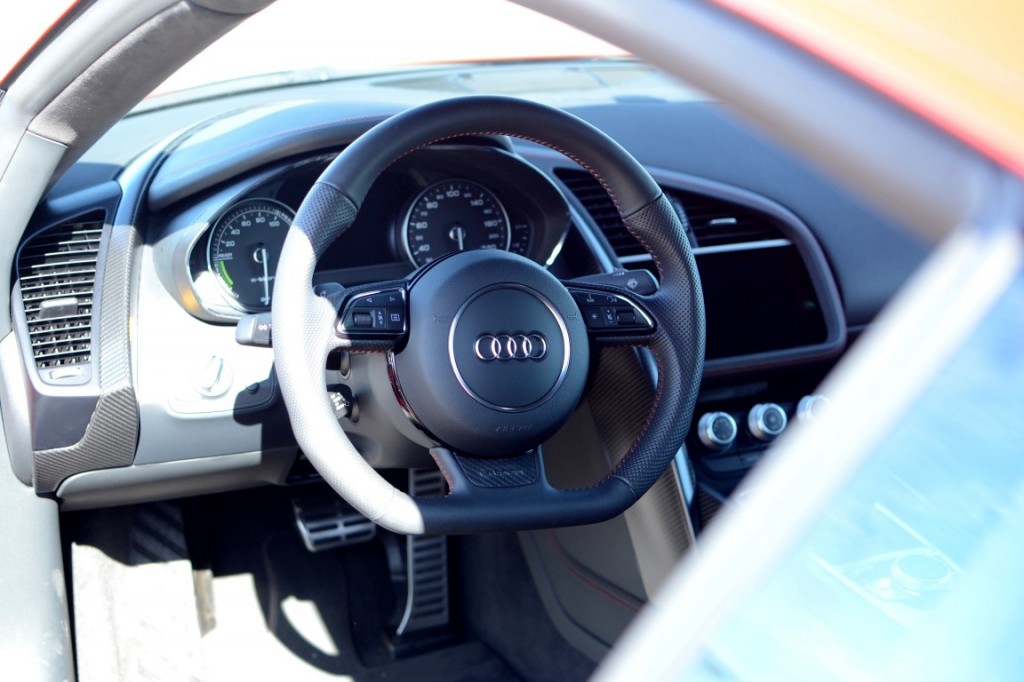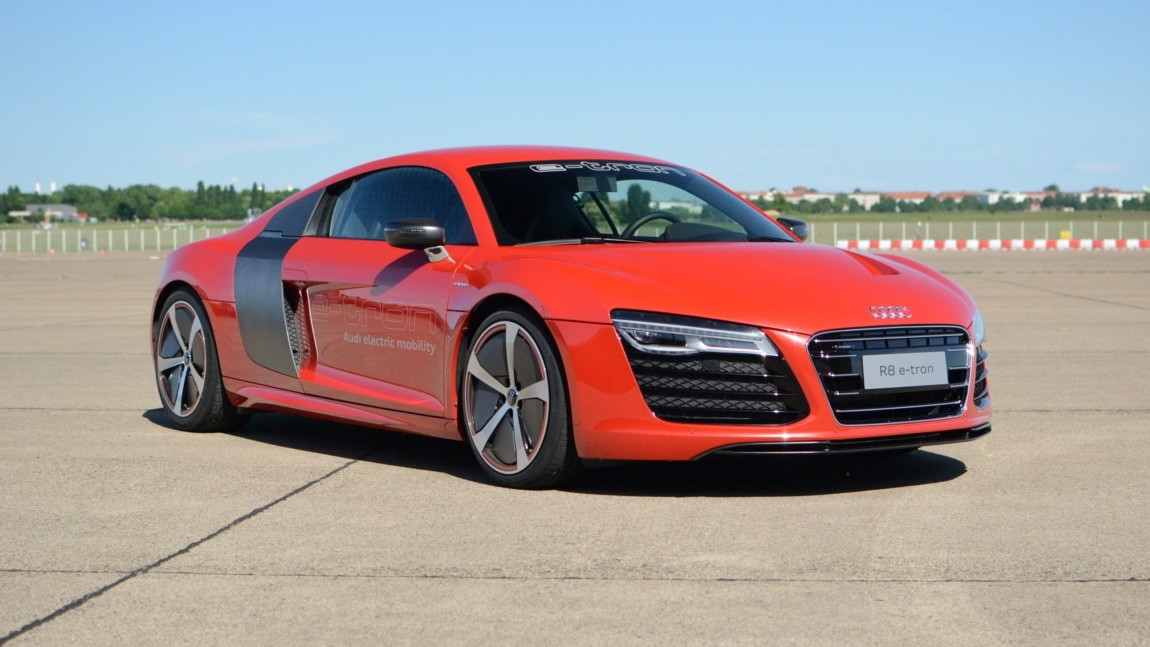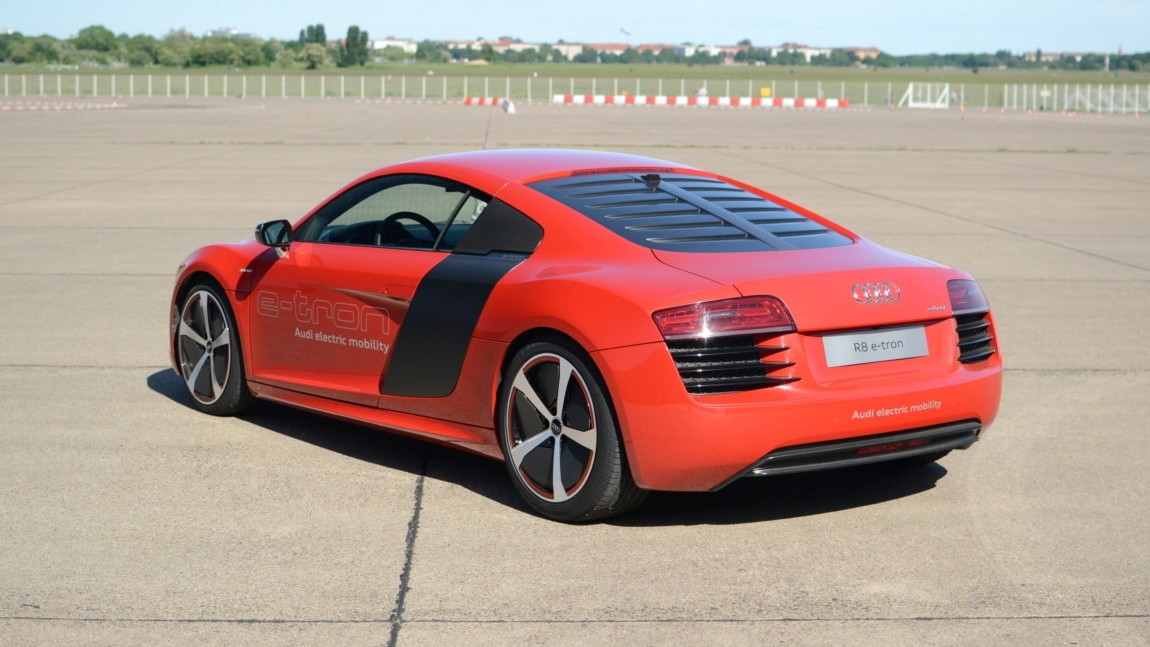Thanks to the combined efforts of companies like Tesla Motors, Mercedes-Benz and others, the concept of an electric supercar no longer seems as unlikely as it once did.
Audi has now joined that list too, with its striking R8 e-tron electric supercar.
The German automaker invited us to the mighty Tempelhof Airport in Berlin to try the e-tron for ourselves.
And while a spectacular car to drive, a production run limited to ten examples and no chance of any ever going on sale have left us feeling like a kid who's been handed a candy bar but told the candy shop itself will close forever...
Under the skin
For a vehicle wearing the R8 badge, it's remarkable how little of the regular Audi R8 actually remains in the e-tron.
From the top, you no longer get a V8 or V10 gasoline engine, motive power instead supplied by two 140 kW (187 horsepower) electric motors, with a combined torque output of almost 605 pounds-feet. For comparison, an R8 V10 produces "just" 390 lb-ft.
The only original exterior panels that remain are the door skins--everything else is now lightweight carbon-fiber. Overall, the e-tron weighs 3.924 pounds.
Where once there was a glass cover to display the R8's engine is now a carbon-fiber panel hiding the enormous battery pack, and the e-tron's unique alloy wheel design features self-closing carbon flaps to improve aerodynamics. Alongside a few more subtle tweaks, aero drag has been reduced by 0.02 for a drag coefficient of 0.27.
Changes continue out of sight--steel springs are replaced with lighter glass-fiber reinforced plastic (GFRP) units (resistant to corrosion, snapping and the effects of road grime and corrosive cleaning products) and the rear wheel hubs are now titanium.
Audi R8 e-tron track drive, Berlin Tempelhof Airport
On the track
What does a relatively quiet car with 605 lb-ft of torque feel like to launch? Surreal, amusing and devastatingly quick all at once.
Despite lacking the concept's (and indeed the regular R8's) all-wheel drive, traction is absolute and the e-tron bounds from the line as if fired from a slingshot. With no gearshifts to deal with the 4.2-second 0-62 mph time is endlessly repeatable and acceleration continues unabated to the 80-or-so mph before the first braking point.
Part of the surrealism is down to the car's relative silence, though a distinct and not unpleasant electric hum can be heard under hard acceleration, a noise equally audible outside the car.
The brakes are equally powerful. In gentler driving, retardation is handled entirely by the electric motor's regenerative resistance, yet you'd not know it with plenty of feel through the pedal.
Transition to friction braking is seamless and response is fantastic--aided by the rear brakes' electronically-actuated calipers.
Incidentally, we were told that the car's regenerative braking is so effective that after the R8 e-tron's Nurburgring lap record last year, its rear brakes were so cool you could actually touch them--not recommended with reguar brakes...

Audi R8 e-tron track drive, Berlin Tempelhof Airport
Balanced, fun
It seems almost regressive that Audi would offer its electric R8 with rear-wheel drive only, but its benefits would be few and the negatives numerous.
Among the benefits of rear-wheel drive only is sweet chassis balance allowing you to really exploit the tires' grip front and rear. Unusually for a supercar, the tires are only H-rated--suited to the car's relatively lowly 125 mph top speed--but provide plenty of grip, even on Tempelhof's dusty concrete apron.
The e-tron has three driving modes--Efficiency, Auto and Dynamic. Even in Efficiency mode the e-tron's electronic stability systems are relatively unintrusive, while Auto and Dynamic offered extra slip for the keen driver.
With ESP switched off, all that torque makes it simple to provoke the R8 into entertaining slides, and quick, pleasantly talkative steering makes them easy to catch. Torque vectoring--braking or accelerating individual wheels--aides cornering when you're not being silly, and its apex-hunting effects can be felt when negotiating longer, quicker corners.
Perhaps more impressively, the R8 e-tron is as happy driving at very low speeds as it is going quickly. In that respect, the R8's typical usability shines through unchanged--though no regular R8 is as silent, and indeed squeaky-clean and green, as the e-tron.
Fun all day 'til pops takes the e-tron away
And all of this makes it a crying shame that Audi has essentially said NEIN! to producing the R8 e-tron in greater numbers.
As with virtually any electric car--Tesla Model S possibly excepted--a 133-mile range would still limit the R8 to shorter drives, and as such it might never have the same appeal for many buyers as the gasoline versions.
In addition, each of the ten cars currently in Audi's possession cost a reputed 1.3 million dollars.

Audi R8 e-tron track drive, Berlin Tempelhof Airport
That isn't necessarily what Audi would sell them for if a larger production run was planned and costs had been amortized, but like the Mercedes-Benz SLS AMG Electric Drive, an electric R8 would still be hugely more expensive than a gasoline one.
But perhaps the e-tron's greatest talent is that not once during our laps around the coned course at Tempelhof did we wish we had a gasoline engine behind us.
And that, if you're used to associating a loud engine with the concepts of driving fast and having fun, comes as quite a revelation.
Audi provided airfare, lodging, meals and refreshments to enable Internet Brands to bring you this first-person drive report.






